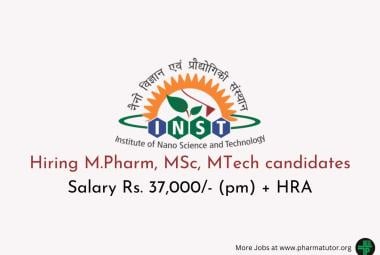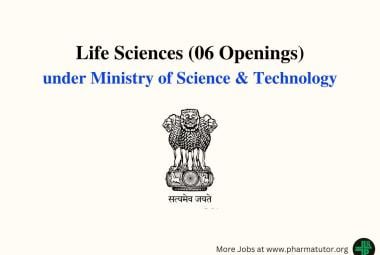ABOUT AUTHORS:
Bhimavarapu Ramya Reddy*1, Bhavna Priyasri S2
*1Department of Pharmaceutical Analysis, A.M Reddy Memorial College of Pharmacy, Narasaraopet, Guntur, Andhra Pradesh, India
2Department of Pharmaceutical Engineering, New Jersey Institute of Technology, New Jersey, U.S.A.
ramyareddy.bh@gmail.com
ABSTRACT:
Dried blood spots (DBS) as an attractive alternative to conventional venous plasma sampling in many pharmaceutical companies and clinical laboratories, different analytical approaches have been developed to enable automated handling of DBS samples without any pretreatment. DBS offers a number of advantages over conventional blood collection. As a less invasive sampling method, DBS offers simpler sample collection and storage and easier transfer, with reduced infection risk of various pathogens, and requires a smaller blood volume. DBS-LC-MS/MS has emerged as an important method for quantitative analysis of small molecules. This technique is Widely used to screen for metabolic problems in newborn babies, PK studies. The objective of this review is to describe the analytical concepts of current direct DBS techniques along with DBS sample collection, processing and storage and to present their advantages and disadvantages.
REFERENCE ID: PHARMATUTOR-ART-1870
INTRODUCTION:
Pharmacokinetic (PK) animal studies provide crucial insight into how drug candidates may be absorbed and distributed in the human body and are, therefore, a critical step in drug development. This type of analysis traditionally requires large volumes of blood from one or more test animals in order to provide sufficient plasma volume over several time points for quantitative bioanalysis. Additionally, the plasma needs to be isolated from whole blood, separated, and prepared for bioanalysis using solid phase extraction, liquid- liquid extraction or protein precipitation1.
This time-consuming process limits throughput and consequently how many samples can be tested. Another limitation is the sampling method. Because only a limited number of serial samples can be taken from each animal, composite sampling is often used, resulting in lower quality PK data and an increase in the number of animals required. Finally, there are practical challenges with shipping and storing blood samples, which require controlled handling and frozen transportation and storage1,2.
The use of dried blood spots (DBS) obtained from heel or finger pricks and spotted onto filter paper for the collection and analysis of human blood dates back to the early 1960s when Dr Robert Guthrie used the specimens to measure phenylalanine in newborns for the detection of phenylketonuria. This novel approach of blood collection led to the population screening of newborns and other clinical testing. DBS offers a number of advantages over conventional whole blood, plasma or serum sample collection. First, it requires a less invasive sampling method (finger or heel prick, rather than conventional venous cannula), which helps in recruitment of subjects for preclinical or clinical studies. Second, it offers a simpler storage and easier transfer because there is no requirement for freezers or dry ice in most applications1,3. DBS can be conveniently collected by patients themselves or guardians with minimum training and sent by mail to the assigned laboratory, avoiding unnecessary costs Third, DBS reduces the infection risk of HIV/AIDS and other infectious pathogens to a minimum. Fourth, DBS requires a smaller blood volume (less than 100 μL, compared with more than 0.5 mL blood, which is usually obtained for conventional blood sample collection). The combined advantage of the above allows for a significant simplification of blood sample collection and handling for newborns, infants, small animals and other special patient populations for various studies. Currently, more than 95% of newborns are screened for inherited metabolic disorders using DBS in the USA and the application of DBS has been extended to many other fields, including therapeutic drug monitoring toxicokinetics and pharmacokinetics2,3. For many years, immunoassay and other assay methods have been employed for quantitative analysis of small molecules in DBS samples. However, immunoassays might require handling radioactive materials and/or prolonged incubation, and are susceptible to cross reactivity by endogenous components and nonspecific c binding. Methods based on liquid chromatography (LC) coupled with UV or fluorescence detection, in general, provide better selectivity than some immunoassay methods by employing a chromatographic separation of the analyte of interest from most interfering components in the sample matrix. Unfortunately, assay sensitivity and specificity are still a challenge due to the detection techniques. Gas chromatography (GC) in combination with mass spectrometric detection (GC-MS) is, in general, more sensitive than the LC-UV or LC-fluorescence methods; however, GC run times are normally long1,4. The time-consuming sample preparation and the necessity of derivatization for many analytes make GC-based methods less suitable for the highthroughput analysis of large sample sizes. In addition to the above MS/MS detection modes where (1) all precursor ions that produce a single product ion are detected in the precursor ion scan, (2) all precursor ions that undergo the loss of a common fragment are detected in the constant neutral loss scan and (3) all product ions that are produced from a single precursor ion are detected in the product ion scan, MS/MS offers some sensitive detection methods, i.e. selected reaction monitoring (SRM) and multiple reaction monitoring (MRM). In SRM or MRM, only the selected precursor ion(s) and the selected product ion(s) are detected3,4. Rapid advances in MS technology in the past decade has produced MS/MS systems with significantly enhanced sensitivity and selectivity for the quantitative analysis of various small molecules in the DBS samples, as demonstrated by numerous applications in the diagnosis of various inherited metabolic disorders during newborn screening. However, the specificity of MS/MS assay alone is often hampered by interferences of the matrix components, especially those sharing the same MS/MS transitions with the target analytes2,4.
DBS-LC-MS/MS is relatively new to the pharmaceutical community. However, the impressive growth of the technique in quantitative analysis of small drug molecules has been well demonstrated. There is no doubt that the technique will play an increasing role in drug discovery and development in addition to the expanded applications in therapeutic drug monitoring. The purpose of this review is to introduce the basic principles of the DBS technique with a focus on the development and validation of a rugged quantitative LC-MS/MS method using DBS. A brief discussion on the correlation of DBS vs plasma or serum is included to help better understand and interpret the DBS results. In this review, we summarize the representative applications of DBS-LC-MS/MS for the determination of small biomarker molecules in newborn screening and drug and/or drug metabolites in toxicokinetics, pharmacokinetics and therapeutic drug monitoring.
DRIED BLOOD SPOT SAMPLE COLLECTION, PROCESSING, STORAGE AND TRANSPORTATION:
Before exploring the use of DBS sampling, a detailed check for the physicochemical properties of the target analyte is necessary. It is apparent that volatile and/or air-sensitive analytes should not be collected on DBS card/paper. The collection of DBS samples is normally conducted by pricking the finger, heel or toe with a lancet, and the blood drops are then spotted onto preprinted circles on specially manufactured DBS card/paper.
DBS PAPER/CARD:
Schleicher & Scheull 903 paper,manufactured from 100% pure cotton linters with no wet strength additives added, is an FDA listed class II medical device. The paper has been extensively used in newborn screening and other applications worldwide. Some other cards/papers, e.g. no.545 filter paper, have also been use , The DBS paper/card might be further treated via impregnation for an improved extraction recovery. In addition to particle retention, pore size and thickness that determine the loading capacity and spreadability of blood sample onto the DBS paper/card , uniformity and absorption characteristics of the card/paper from lot to lot are important. In neonatal screening, the performance of DBS paper is monitored by the Newborn Screening Quality Assurance Program (NSQAP) to ensure that any new paper lots are consistent with the established guidelines and that performance is consistent from lot to lot. NSQAP has developed a procedure to evaluate the paper’s uniformity and absorption characteristics.According to the manufacturer ,both cards are chemically treated with proprietary reagents that, upon contact, lyse cells, denature proteins and prevent thegrowth of bacteria and other microorganisms. Recently, both cards have been employed in combination with LC-MS/MS for the quantitative analysis of small drug molecules and their metabolites in preclinical and clinical studies.
BLOOD COLLECTION:
Heel, finger or toe pricks using a single-use safety lancet is a widely accepted method for blood sampling from infants (heel or big toe only), young children and adults. In preclinical studies, small animals (e.g. mouse, rat, etc.) can be tail bled. After the pricks, the blood drop is directly applied onto the sampling paper/card within a pre-marked circle, ideally one drop per spot. Touching the circle area should be avoided, especially before the blood is applied and dries completely. Clotting, layering or supersaturating should be prevented. The predefined circle must be homogenously and symmetrically filled and both sides of the card/paper must show the same red color. Samples indicating contamination or hemolysis or with insufficient volume collected are deemed not suitable. The blood sample can also be applied with a calibrated pipette onto the sampling paper/card, thus avoiding potential variability in blood samples due to hematocrit effect, blood volume influence, possible uneven distribution of blood on the card/paper and other sampling errors. The pipette tip should be a few millimeters above the card/paper. As the blood drop touches the card/paper, it should be swiftly expelled.

Figure 1-blood spotting from capillary on a DBS card
DRYING, STORAGE AND TRANSPORTATION:
It is very important to dry blood spots completely before storage or transportation. In general, a minimum of 2–3 hr drying in an open space at room temperature (15–22°C) is recommended .However, the drying time depends on the type of paper/card and the blood volume applied. The samples should not be heated, or allowed to touch other surfaces, and should be kept away from direct sunlight or daylight if needed. Moisture might affect the quality of the blood samples on the card/paper by inducing bacterial growth, altering extraction efficiency during analysis or facilitating degradation of unstable analytes. Thus, after drying, the DBS samples should be protected against humidity and moisture by covering them with a paper overlay and packing them in low gas-permeable zip-closure bags with desiccant packages. Humidity indicator cards should be included in the storage package. DBS samples protected in this manner may be stored at room temperature for many weeks, months or years ,depending on the analyte stability. However, samples that contain unstable compounds should be stored at a lower temperature (e.g. 2–8°C) in order to enhance stability. DBS samples that have been packed as described above can be transported through the mail in a high-quality bond envelope.

Figure 2-punching a dried blood spot from a DBS card
APPLICATIONS:
DBS technique has considerable advantages for the pharmaceutical industry
1. Newborn Screening
Many recent applications in the newborn screening using LC-MS/MS have demonstrated that the technique is a better choice than MS/MS alone or some other means for the accurate quantification of biomarker molecules in the DBS samples
There are many situations in newborn screening where absolute concentration of a single biomarker molecule may not be diagnostic; instead, accurate quantification of multiple biomarker molecules using LC-MS/MS, followed by comparison of response ratios of one species to the other(s), is more powerful.
2. Preclinical Study
Although very few applications of DBS in preclinical study have been published on toxicokinetic or pharmacokinetic assessment of drug or drug candidates in small animals, the potential benefits of using this technique is too pronounced to be ignored by pharmaceutical industry. The small blood volume (<100 μL for multiple spots) used for DBS sampling makes its use possible for serial bleeding from small animals.
3. Clinical Study and Therapeutic Drug Monitoring
DBS-LC-MS/MS has been increasingly employed in clinical study and therapeutic drug monitoring for the analysis of a wide spectrum of drug molecules, including antipyretic, antitussive, antimalarial, anticonvulsant, antiretroviral, immunosuppressant, antiepileptic and vinca alkaloids, and in monitoring drug abuse.
Because DBS samples could be collected by patients themselves or their guardians with minimum training, this opens up the possibilities of collecting clinical pharmacokinetic samples not only from various in-patients, but also from out-patients, especially those from remote areas. This is especially meaningful when there is a need to monitor drugs, e.g. tacrolimus and cyclosporine A, with a narrow therapeutic index, but a wide inter-patient and intra-patient pharmacokinetic variation. DBS samples can be promptly taken whenever a concentration related side effect appears. The obtained analytical results might lead to a necessary adjustment of dose or dose regimen.In all cases where serum or plasma, instead of DBS, has been used as the matrix for quantitative analysis of drugs during discovery and development, it would be necessary to determine the relationship between the analyte concentration in the two matrices
(plasma/serum vs DBS).
ADVANTAGES:
The DBS technique has considerable advantages for the pharmaceutical industry
1. Reduced animal usage:
Toxicokinetic(TK) satellite groups are no longer required for rodent studies. The corresponding reduction in animal numbers is in line with our long standing support for the 3RS (replacement, refinement, reduction).
2. Improved data quality:
TK data may be directly correlated to pathology findings and the data are obtained from the circulating matrix (i.e whole bloo
3. Improved efficiency:
Savings may be materialized through reduced animal numbers and husbandry. Lower sampling shipping costs and sampling stability testing.
4. Superior stability:
DBS samples are generally more inert than frozen samples.
5. Simplified procedure:
Plasma/serum samples and frozen sample storage are not required.sample shipments can be made at ambient temperature via conventional couriers.
6. Enhanced clinical co-operation:
Simple finger prick sampling techniques eliminate the need for clinical venopuncture for PK sampling, delivering improved volunteer co-operation and reduced dropout rates.
7. Low contamination risks:
Dry samples have inherently low cross-contamination risks.
8. Streamlined development:
Serial mouse blood sampling is possible in discovery/lead candidate optimization technique.
CONCLUSION:
DBS technology is applicable to most bioanalytical applications mostly suited for small molecules.
This technique has benefits throughout the entire drug development process,from early screening using single mouse for an entire profile through full scale toxicology studies where the ethical benefits of the dramatically reduced matrix requirement can significantly reduce the no. of animals require and simplify procedure.
As the development program move into clinic ,DBS continue to offer benefits.the technology allows simplified sampling procedure from subjects and the samples can be shipped via a conventional courier at ambient temperature-a significant advantage when shipping from multiple remote sites around the globe.
ACKNOWLEDGEMENT:
The authors would like to thank Ms.Bhavna Priyasri , Mr. Nageswararao for helpful scientific discussions with the paper.
BIBLIOGRAPHY:
1. Wenkui Li and Francis L. S. Tse, Dried blood spot sampling in combination with LC-MS/MS for quantitative analysis of small molecules, journal of biomedical chromatography, 2010; 24: 49–65.
2. Charles river laboratories international, bio analytical services-dries blood spot,2010,Inc .v(1).
3. Alturas analytics,dried blood spot analysis-the past,present,future ,journal of chromatography,2009,81,1557.
4. Barfield ,et,analytical journal of chromatography,B.2009,887,799.
NOW YOU CAN ALSO PUBLISH YOUR ARTICLE ONLINE.
SUBMIT YOUR ARTICLE/PROJECT AT articles@pharmatutor.org
Subscribe to Pharmatutor Alerts by Email
FIND OUT MORE ARTICLES AT OUR DATABASE









